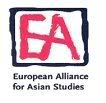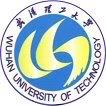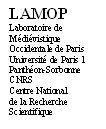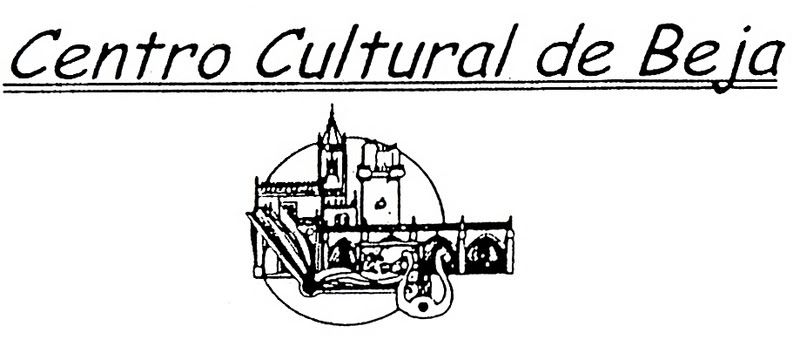February 16, 2008
Titres des communication (30’ de présentation / 20’ de débat pour chaque communication)
et programme général:
Mardi Avril 8, Beja. Session d’ouverture
Session d’ouverture sous les auspices de la Mairie de Beja avec la participation de représentants de l’IGESPAR (Institut Portugais du Patrimoine /Ministère de la Culture).
Allocution d’ouverture du Professeur Carlos Guedes Soares, directeur du département d’Ingénierie Navale de l’Instituto Superior Técnico (IST, Lisbonne) et du professeur Xi Long Fei, ingénieur et archéologue naval fondateur de la School of Transportation, Université de Wuhan, République Populaire de China.
Communications de la Matinée:
- Francisco Alves (Portugal)[1] et Eric Rieth (France)[2]: Keel assembling and hull caulking system-patterns of Portuguese ancient wooden shipbuilding based on archaeological evidence.
- Ana Vongkh (Macao Autonomous Province, RP China)[3]: The way Chinese shipbuilders used to build their boats and how they made them strong.
Communications de l’Après-midi
- Hang Choi (S. Korea)[4]: The hull form, construction method and structural strength of ancient Korean Ships.
- Eric Rieth (France): Geometry of hull shapes and architectural structure: a different approach to the study of the origins of the «frame-first» shipbuilding in the Mediterranean (Géométrie des formes de carène et structure architecturale: une autre approche de l'étude des origines de la construction "sur membrure première" en Méditerranée).
-Vasco Mantas (Portugal)[5]: Roman Shipbuilding. Models and Influences (Construção naval Romana. Modelos e Influências).
_________________________________________
Mercredi 9 Avril, Beja
Communications de la Matinée:
- Randy Sasaki (Japan)[6]: Considering the Philosophy of shipbuilding in Medieval East Asia : Case Study from the lost Fleet of the Kublai Khan.
-Lotika Varadarajan (India): Sewn Boats of Lakshwadeep/Laccadives Islands (title to be confirmed)
- Bart Boon (Netherlands)[7]: What limits the size of wooden ships?
_________________________________________
Jeudi 10 Avril, Monastère de Arrábida
Présentation de la journée par un responsable de la Fondation Oriente
Communications de la Matinée:
-Xi Longfei (R.P. China)[8]: Archaeology of Chinese Ancient Ship and Structure Mechanics Analysis (I).
- Cai Wei (R.P. China)[9]: Archaeology of Ancient Chinese Ship and Structure Mechanics Analysis (II).
-Rex Warner (United Kingdom): 15th-Century Chinese shipbuilding and navigation to the Indian Ocean : A Sailor’s Perspective.
Communications de l’Après-midi:
- Sally Church (United Kingdom)[10]: Two 16th-century Shipbuilding Manuals and the Light they Shed on the Structure and Materials of Ming Dynasty Chinese Ships.
- Kioko Koiso (Japan)[11]: Ships under pain: the structural behaviour of ships from the Portuguese Carreira da India as testified in shipwreck narratives.
- Catarina Garcia (Portugal)[12]: To build and «unbuild» Angra C and Angra D.
_________________________________________
Vendredi 11 April, Arrábida
Matin: transport vers le chantier naval traditionnel de Sarilhos Pequenos (bas cours du fleuve Tage), un des derniers construisant des embarcations en bois. La visite est organisée par l’ingénieur Celso Santos, promoteur du patrimoine naval de la région[13]. Transport : Municipalité de Peniche.
Déjeuner et après-midi à Peniche. Réception par la Municipalité de Peniche.
Visites (organisation: Municipalité de Peniche - Câmara Municipal de Peniche):
-Visite du périmètre maritime de la péninsule Peniche ceinturée par l’océan Atlantique. La visite inclut le port de pêche de Peniche où repose un grand fragment de carlingue en bois massif provenant de dragages du port et des vestiges d’un voilier marchand à trois mâts construits en Espagne au début du XXe siècle. La gigantesque pièce de bois massif illustre une des nombreuses solutions structurales des constructeurs navals du passé à la recherche de la raideur longitudinale des navires
-Musée Municipal de Peniche: Modèles (demi-coques) en bois provenant des chantiers navals de Peniche de la première moitié du XXe siècle.
-Commentaires d’un constructeur naval traditionnel, José Maria Cativo, concernant la morphologie et structure des anciennes constructions navales en bois à Peniche
_________________________________________
Samedi 12 Avril, Peniche
Communications de la Matinée:
- Alessia Amato (Italia)[14]: Shipbuilding in wood in ancient Mediterranean. Archaeological analisis of the evolution of the main structural elements, comparative analysis of assemblage typologies from the Archaic to late-classical period (Construção naval lignea no Mediterraneo. Análise arqueológica dos principais elementos estruturais, confronto das tipologias de assemblagem, entre a época arcaica e a tardo-antiga).
- Eusebio Dizon (Philippines)[15]: A Presentation of Ancient Shipwrecks observed by underwater Archaeological works in the Philippines.
- Tiago Fraga (Portugal)[16]: Cargo and Warriors: Late Seventeenth Century Iberian Construction: Santo António de Tanna.
Communications de l’Après-midi:
- Fang Lan (R.P. China)[17] and Li Bang Yan (R.P. China): The last wooden sailing fishing boats of lake Tai, China (2d half of XXth century).
- Vanessa Loureiro (Portugal)[18]: Structural elements from Arade 1 (second half XVth century / 1rst half XVIth century ship remains).
-Yong-han Kim (Korea)[19]: Medieval ship remains investigated in Korea (provisional title)
- Jean-Yves Blot (France)[20]: Two case studies of structural analysis applied to 18th and 20th century Spanish shipwreck remains found in Peniche waters.
Fermeture du Workshop Asie-Europe sous les auspices de la Municipalité de Peniche.
Pour les participants
Dimanche 13 Avril, Peniche: transport de Peniche à Lisbonne et à l’aéroport pour les vols.
Les participants invités qui ne peuvent accompagner la totalité des cinq jours du Workshop sont priés d’en informer le Coordinateur dès que possible.
Il est rappelé aux mêmes participants auteurs des communications qu’un résumé de 1-3 pages (sans limite supérieure de taille) doit être adressé dans les meilleurs délais au Coordinateur à temps d’être inclus dans les Pré-Actes (Pre-Proceedings) qui seront distribués lors du Workshop en avril prochain.
Les auteurs des communications sont invités à indiquer à l’avance le type de support technique requis pour leur présentation (video projecteur /projecteur de diapositives/ rétro- projecteur pour documents transparents).
Tous les documents (fichiers texte et images) des auteurs / participants du Workshop destinés aux Pré-Actes (Pre-Proceedings) doivent être adressés en format doc (texte) et jgp (images) à:
Jean-Yves Blot, Coordinateur Workshop Asie-Europe
c/o DANS/IGESPAR - Avenida da Índia, 136 - 1300-300 LISBONNE, PORTUGAL.
Mél:jyb.cnans@ipa.min-cultura.pt
______________________
[1] DANS/IGESPAR director, professor at Universidade Nova, Lisbon.
[2] CNRS, professor at Paris I University.
[3] Maritime Museum, Macau.
[4] Professor, Seoul National University.
[5] Professor, Coimbra University.
[6] Post graduate, Texas A&M University.
[7] Naval Architect, Research and Consultancy. Teaches ship structure at the University of Duisburg/Essen, Germany
[8] Wuhan University, retired.
[9] Wuhan University.
[10] Cambridge University.
[11] Post graduate. Lisbon University (Faculdade de Letras ).
[12] Archaeological department, Azores islands provincial government.
[13] LAITAU (Association pour la Préservation et la Dynamisation du Patrimoine Naval du Sado), est une association sans but lucratif. Son fondateur et président, l’ingénieur forestier Celso Santos, a été le promoteur de nombreux projets dont la reconstruction d’embarcations traditionnelles (galeão do sal Zé Mario), la construction de répliques opérationnels (Hiate de Setubal), le sauvetage d’un bateau traditionnel coulé en rivière (galeão do sal Amendoeira) ou la promotion d’études ayant pour objectif la restauration ou la construction d’autres répliques d’embarcations anciennes.
[14] Postgraduate, Coimbra University
[15] National Museum of the Philippines, Manila
[16] Postgraduate, Universidade Autónoma de Lisboa.
[17] Post graduate, Suzhou University
[18] Post graduate, Paris I University, France.
[19] Director, National Maritime Museum, Mokpo, Korea
[20] Post graduate, Paris I University, France.
 Asia-Europe Workshop / Portugal 2008
Asia-Europe Workshop / Portugal 2008















